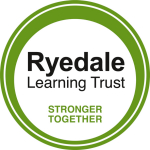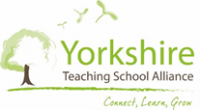The second piece in AoS 4 is Rag Desh, from India. There are three different versions of the piece to listen to and study.
11.1. Rag Desh - Anoushka Shankar (GCSE Music Edexcel)
Very basic facts on...'Rag Desh' - by Anoushka ShankarFrom 'Live At Carnegie Hall'Set Work 11 (Version 1) for GCSE Music EdexcelFrom Area Of Study 4 - World ...
11.2. Rag Desh - Chiranji Lal Tanwar (GCSE Music Edexcel)
Very basic facts on...'Rag Desh' ('Mhara Janam Maran') - by Chiranji Lal TanwarFrom 'Mewar Re Mira'Set Work 11 (Version 2) for GCSE Music EdexcelFrom Area Of...
- YouTube
Enjoy the videos and music you love, upload original content, and share it all with friends, family, and the world on YouTube.
Understanding How Indian Music Works
Indian music is in some respects built in the same way as Western music, but different terms are used to describe the musical elements. Hopefully this basic table below will set you going, and the more you study further down the page, the more detail we’ll go into.
| Indian Term | Western Term |
| Rag | Scale |
| Taal/Tal | Rhythm |
| Sargam | Major |
| Sa | Tonic |
| Alap | Intro |
| Gat | Main section |
| Tan | Fast ornament |
| Meend/Mind | Pitch bend |
We are going to learn about the differences between all three, and the musical ideas which bind them together.
What is a Rag?
A rag is the Indian classical music equivalent of a scale. However, unlike a ‘normal’ scale, it doesn’t have to move by step, doesn’t have a set number of pitches in it, and is sometimes played differently, depending on whether you are going to go up or down in pitch.
There are hundreds of different types of raga, most of which have some sort of cultural, ceremonial or spiritual reference, possibly to do with the time of year or day, an important occasion such as a religious event or a personal one, like a wedding.
Rag Desh
Rag Desh is a specific type of rag, used to compose a piece of music for the monsoon season, which looks like this in traditional notation:

Notice it does’t move by step on the way up, and is slightly different on the way back down.
The key note or tonic in Indian music is called the sa, and the tonal system (a bit like major or minor) is the sargam.
The three pieces that we have to study are all based on Rag Desh.
What is the tal?
Tala are rhythm patterns. There are several that we need to remember:
Rupak (3+2+2=7)
Keherwa (2+2+2+2=8)
Jhaptal (2+3+2+3=10)
Ektal (2+2+2+2+2+2=12)
Tintal/Teental (4+4+4+4=16)
They are a bit like time signatures, and most Indian pieces change tal at least once in the piece.
In addition to these, there are occasional tihai patterns used, which are specific syncopated, repeated rhythm patterns. They sometimes signify the end of a section.
Structure
There is a set pattern to the structure of an Indian classical piece:
Alap – slow, no pulse, improvised using the rag
Jhor – second section, slightly faster
Jhalla – third section, slightly faster again
Gat (Instrumental only)/Bandish (with vocals) – main section, split into shorter sections, when the tal changes.
None of the Rag Desh versions have a jhor or jhalla, but EDEXCEL still expect you to know these terms.
Instrumentation
For pictures of all the instruments listed below, click here to find them all.
The tabla are a pair of drums, which sit on a little ‘donut’ on the floor. One drum is slightly larger than the other.
The sitar is a stringed instrument with frets, plucked. It also has a layer of sympathetic strings, which vibrate, creating a drone in the background.
The sarod is similar to the sitar, but has no frets and is smaller. Despite this, it is lower in pitch.
The sarangi is a bowed instrument, higher in pitch than the sitar, a bit like a violin.
The esraj is also bowed, like a violin.
The bansuri is an Indian flute.
The tambura is a drone instrument, with four strings.
The pakhawaj is a double-headed drum.
Other Musical Elements
A tihai is a syncopated riff, often repeated at section endings.
A tan is a fast-moving scale passage (don’t mix this word up with tal).
Rag Desh Version 1
This is the simplest of the three, scored for sitar and tabla drums.
The piece starts with a free alap, before progressing into a lively gat.
The alap has no metre (regular beat). The sitar plays freely, improvising around the rag.
The gat is a fixed, ‘prearranged’ section, which has a Jhaptal rhythm pattern for most of it, switching to a tintal towards the very end.
For detail of what happens throughout this, use your score – to write it all again wouldn’t provide any extra insight.
Rag Desh Version 2
This version, Mhara janam maran, is a bhajan (song). It is written for voice, sarangi, sarod, pakhawaj, cymbals and tabla.
The alap contains a freely metered section based loosely on the chorus of the song.
The bandish has a regular structured pattern to it, alternating between a vocal verse and chorus, followed by an instrumental solo, using either the sarod or sarangi. This pattern is repeated three times. The tal is a fast keherwa tal.
For detail of what happens throughout this, use your score – to write it all again wouldn’t provide any extra insight.
Rag Desh Version 3
This is the longest of the three, and the most complex. It is written for bansuri, esraj, tambura and tabla.
The piece starts again with an alap. This is a significantly longer section than in the previous two versions. It starts with a drone on the tambura, and the bansuri then starts a series of elaborate improvisations, building ideas from short motifs based on the rag. The melody is quite fragmented at the start, but becomes more continuous as the section develops.
The gat is split into two, each with a different tal. The first gat is a slow one, with a rupak tal. The tabla and the bansuri take it in turns to play some elaborate improvisations against a simpler part on the other instrument. Tihais are used to mark the end of sections.
This leads into the second gat, in ektal time. Lots of fast moving bansuri passages provide the main ideas. This includes using tans several times. Again, tihais are used at the end of the piece.
For detail of what happens throughout this, use your score – to write it all again wouldn’t provide any extra insight.
Help!
Because these pieces are completely different from everything else we’ve studied, it needs a slightly different approach. What you need to be able to do is apply the information above to the specific part of the piece that you are played in the exam. This will take practice and time, but it is necessary to answer the questions well.
Revision
As with all the pieces, there is a three-way process to learning everything you need to know about the piece:
- Know the basics (C) – title, composer, key, time signature, instrumentation etc. This needs learning to start with.
- Understand the detail (B/A) – the technical details of the piece, and how they relate to DR G SMITH. This needs you to have written up all the detail onto your score. Listening to the piece lots whilst following through the score is what is needed here.
- Hear the detail (A/A*) – being able to recognise the sound of all the technical language in the pieces, with no score in front of you. Listening to the piece without the score is what you need to do here.
This checklist document document should help you with the process.


 Ryedale School is a partner in and co-ordinator for the Yorkshire Teaching School Alliance.
Ryedale School is a partner in and co-ordinator for the Yorkshire Teaching School Alliance.